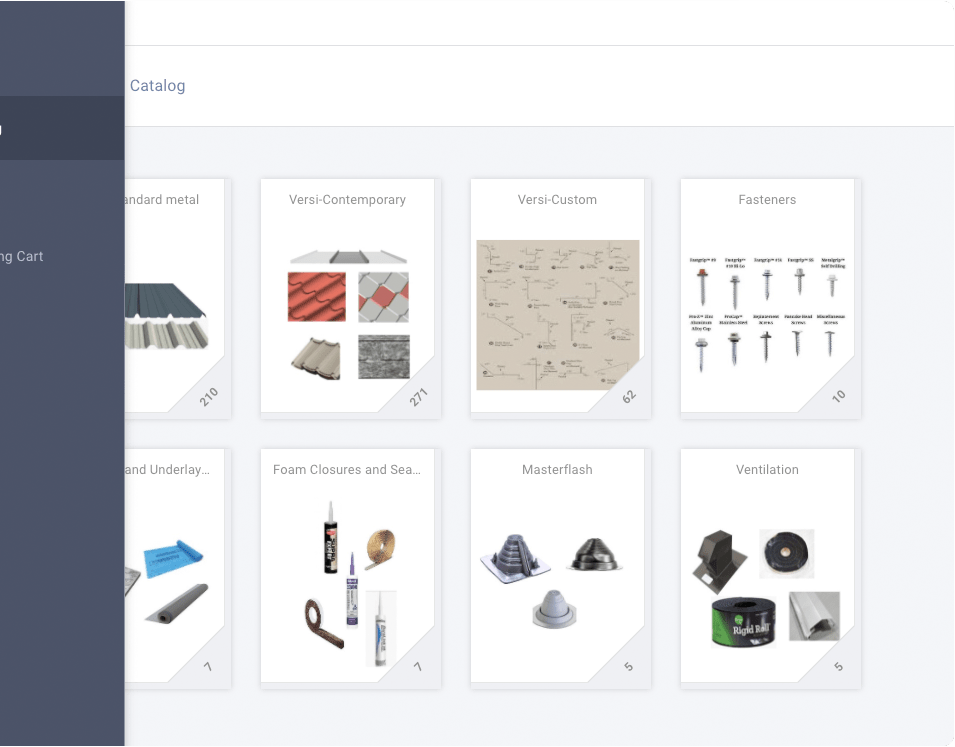Insulating a metal roof from the inside is crucial for energy efficiency and comfort.
Generally speaking, insulating a metal roof from the inside involves selecting the right materials, such as fibreglass batts, rigid foam boards, or spray foam. Proper installation ensures energy efficiency, reduces condensation, and maintains comfortable indoor temperatures throughout the year.
This article will help you understand the basics, prepare for the job, choose the right materials, and execute the process of metal roofing insulation effectively.
Let’s dive into it!
1. Understanding the Basics of Metal Roof Insulation
How Insulation Works
Metal is the best material when it comes to roofing material options for more insulation. Metal roofs generally provide better overall performance compared to other materials like asphalt shingles.
However, if you insulate a metal roof, you can slow down heat flow more, keeping your home warm in winter and cool in summer. Proper insulation for metal roofs can reduce energy costs and enhance comfort. You’ll want to choose the best insulation for your metal roof to maximize these benefits.
Types of Insulation Materials for Metal Roofs
There are several metal roof insulation options, including:
- Fibreglass Batt Insulation: Common and cost-effective.
- Rigid Foam Insulation: High R-value and moisture resistance.
- Spray Foam Insulation: Excellent for sealing air leaks.
Consider your climate, budget, and the existing roof structure. For example, rigid foam boards might be ideal if you need high thermal resistance, while spray foam is great for tight spaces.
2. Preparing for Insulation
Safety First
Before you start, ensure you have safety gear: gloves, goggles, and a mask. Metal roofs can be sharp and insulating materials can irritate the skin.
Gather Your Tools and Materials
You’ll need:
-
- Measuring tape
- Utility knife
- Staple gun
- Duct tape
- Vapor barrier
- Insulation material (e.g., rigid foam, fibreglass batts, spray foam)
Inspect the Metal Roof
Check your existing metal roof for damage. Fix any leaks or weak spots. Ensuring the roof is in good condition will help the insulation last longer and perform better.
3. Step-by-Step Guide to Insulating Your Metal Roof
Measuring and Cutting
Start by measuring the spaces between your roof’s horizontal beams. Accurate measurements are crucial for ensuring your insulation fits perfectly and performs effectively.
- Measure Twice, Cut Once: Double-check your measurements before cutting. Use a measuring tape to get the exact width and length of each section between the beams. This practice helps avoid waste and ensures a snug fit.
- Cutting Insulation Materials: Depending on your chosen insulation material—whether it’s fibreglass batts, rigid foam insulation, or spray foam—use a sharp utility knife or a specialized insulation cutter to cut the material to the required dimensions. Accurate cuts prevent gaps and ensure the insulation material fits tightly against the roof surface and horizontal beams.
- Test Fit Pieces: Before securing the insulation, test fit each piece. This step ensures you haven’t overlooked any adjustments needed for a perfect fit. Proper fitting is key to preventing air leaks and maximizing the insulation’s effectiveness.

Installing Fibreglass Batt Insulation
Fibreglass batt insulation is a popular choice for its ease of installation and effectiveness. Here’s how you can insulate a metal roof using fibreglass batts:
- Position the Batts: Place the fibreglass batts between the horizontal beams of your existing roof. Ensure they fit snugly to avoid gaps that could lead to air leaks and reduced energy efficiency.
- Stapling the Batts: Use a staple gun to secure the batts in place. Staple along the edges, ensuring the batts are held firmly against the roof deck. The tight fit helps in maintaining proper insulation and preventing hot air from escaping in winter or entering in summer.
- Check for Gaps: After securing the batts, inspect for any gaps or areas where the insulation might be loose. Fill any gaps to ensure a continuous insulation barrier. Properly installed fibreglass batts can significantly reduce noise pollution and improve the energy efficiency of your home.
Applying Rigid Foam Insulation
Rigid foam insulation offers high thermal resistance (R-value) and is particularly effective for metal roofs. Follow these steps to apply rigid foam insulation:
- Secure the Boards: Attach rigid foam boards directly to the roof deck. Position the boards carefully to cover the entire surface. Use screws or nails to hold the boards in place, ensuring they are securely attached.
- Seal the Seams: Use duct tape or specialized insulation tape to seal the seams between the foam boards. This step prevents air leaks and enhances the insulation’s effectiveness. Sealing the seams is crucial for preventing condensation and ensuring a moisture-resistant barrier.
- Check for Coverage: Make sure the rigid foam insulation covers all areas without leaving any gaps. Proper insulation coverage is essential for reducing energy costs and maintaining a comfortable indoor temperature.
Using Spray Foam Insulation
Spray foam insulation is ideal for filling gaps and creating a continuous barrier. It expands to fill cracks and voids, making it a versatile option for metal roof insulation. This insulation method, however, might require professional skills to do it properly.
- Prepare the Area: Clean the roof surface and ensure it’s dry. Spray foam insulation adheres better to clean surfaces. Remove any debris or dust before application.
- Apply Spray Foam: Follow the manufacturer’s instructions for applying spray foam insulation. Use closed-cell spray foam for better moisture resistance and thermal insulation. Spray the foam evenly across the roof deck and between the beams.
- Allow Expansion and Curing: Spray foam insulation expands as it cures. Allow it to fully expand and harden. This process creates a tight seal that prevents air leakage and enhances energy efficiency.
- Trim Excess Foam: Once the foam has cured, trim any excess with a utility knife. Ensure the foam sits flush with the beams and roof surface for a smooth finish.
4. Dealing with Condensation Issues
Why Condensation Happens
Metal roofs can be prone to condensation forming on the underside, especially during temperature fluctuations. When warm, moist air rises and comes into contact with the cooler surface of a metal roof, it can condense into water droplets.
Potential Issues
This moisture can lead to various issues, including water damage, decreased insulation effectiveness, and even mould growth. Recognizing and managing condensation is essential to maintain the integrity of your insulation and the overall health of your home.
Prevent Condensation
Install a Vapour Barrier
To prevent condensation under your metal roof panels, take proactive measures to control moisture and ensure proper ventilation. Start by installing a vapour barrier to block moisture from passing through to the cooler metal surface. This barrier helps to reduce the likelihood of condensation forming.
Ensure Good Ventilation
Ensure good ventilation in your attic space to keep air circulating and reduce humidity levels. Installing roof vents and using attic fans can promote better airflow and help keep the area dry.

5. Additional Tips for Effective Roof Insulation
1. Enhance Thermal Performance
Consider using reflective insulation alongside fibreglass insulation to reflect UV rays and prevent heat buildup. This combination can significantly improve the thermal performance of your existing roof and energy efficiency.
2. Combine Insulation Methods
For optimal results, combine different types of insulation. Use spray foam to seal edges and fibreglass batts for the main area. This approach ensures you cover all gaps and achieve the best insulation for your intended use.
3. Regular Maintenance
Inspect your insulation periodically. Look for signs of wear or air leakage and address them promptly. Regular maintenance helps you maintain energy efficiency and extends the lifespan of your insulation.
4. Use Vapor Barriers
When you install insulation, make sure to include vapour barriers. Vapour barriers prevent moisture from penetrating the insulation, which is crucial for preventing mould growth and maintaining effectiveness, especially in a new roof setup.
Conclusion
Insulating your metal roof from the inside is a smart move to keep your home energy-efficient and comfortable. By following these steps and tips, you can create a more cozy or cool living space while keeping energy costs down.
Remember, hire a professional if you want to get to job done professionally, efficiently, and safely.
FAQs
1. What is rigid board insulation, and how does it benefit metal roofing?
Rigid board insulation is a type of insulation made from rigid foam. It provides excellent thermal resistance and is moisture-resistant. When used in metal roofing, it enhances energy efficiency by reducing heat transfer.
2. What are the key considerations for selecting roofing materials?
When selecting roofing materials, consider durability, energy efficiency, and compatibility with insulation. Metal roofing is a popular choice due to its longevity and ability to pair well with various insulation types.
3. What is open-cell spray foam, and is it suitable for metal roofing?
Open-cell spray foam is a type of insulation that expands to fill gaps and cracks. It provides excellent air sealing but is less moisture-resistant than closed-cell foam. It’s suitable for metal roofing in areas where moisture is not a significant concern.
4. How can I ensure my metal roof is installed correctly and efficiently?
To ensure your metal roof is installed correctly and is energy efficient, hire a professional installer. Make sure they properly secure the roof sheathing, use vapour barriers to prevent moisture, and provide adequate insulation. This helps maintain proper airflow and reduces the risk of too much humidity and mould growth.
5. What additional steps can I take to keep my home cooler under a metal roof?
To keep your home cooler under a metal roof, add insulation materials like fibreglass or rigid foam boards. Ensure proper airflow by installing vents and using air conditioning efficiently. Consider using reflective materials and building paper to enhance insulation performance and reduce heat gain.
6. How can I improve air circulation in my attic with a metal roof installed?
Improving air circulation in your attic with a metal roof involves installing vents, such as ridge vents or soffit vents, to promote airflow. You can also use attic fans to help circulate air and reduce humidity levels, preventing issues like mould growth and condensation.



Share This Article
Choose Your Platform: Facebook Twitter Google Plus Linkedin